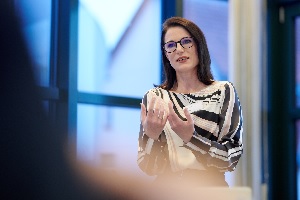Loyalty in companies – Part 3
If we ask ourselves which overarching patterns of problem-solving have been successful in companies in the past, we quickly come to typical mechanisms such as planning, steering, control and sandardisation.
Since management in a crisis is only partially successful, it helps to look at the history of decision-making in terms of three key concepts:
- risk,
- uncertainty and
- uncertainty.
While they are often used synonymously in everyday language, the distinction from uncertainty in particular is important.
Risk is present when the probability of a certain event occurring is known. If this probability is not known, but should be, we speak of uncertainty. To the extent that analyses, tests and models succeed in estimating risks reasonably accurately, uncertainties can be “transformed” into risks. In situations characterised by risks and uncertainties, it is possible to work with a justified hope of success by using the classical instruments.
However, the behavior is different when uncertainty is involved. In this case, the nature of the possible outcomes and consequently their probabilities of occurrence are unknown. Uncertainty always arises when complexity is involved and causalities can neither be calculated nor even understood. It often turns out that measures that are expected to bring clarity and certainty create new uncertainties in other areas that were not envisaged in advance. This in turn makes it all the more clear that any attempt to achieve certainty through planning, control, monitoring and standards must fail in the area of uncertainty. For leadership, this leads to one clear result: we have to learn to take responsibility for the unanswerable.
Sabine is tired of it. First she had to fight her way into a position and now this! The economic situation of her company has been in trouble since 2020. Courage and new ideas alone are no longer enough. No matter what she does, there seems to be no way to turn the situation around. She spends more and more hours in front of her KPI’s, strengthens controlling and pulls herself out of the day-to-day business to concentrate on the numbers.
Unfavourable behaviour: Isolation and lonely decisions, lack of communication.
More promising behaviour: Clear and timely communication, team round and involvement, brainstorming and design thinking, conclusion with clear action plans and solution experiments “on sight”, regular review/adjustment.
Gaining new perspectives through experiments
One viable way to test answers for the unanswerable is through experiments. For their goal is precisely to answer familiar and previously unasked questions in a new way. By means of experiments, we can step out, adopt new perspectives, allow ourselves to be irritated, conduct dialogues, put our own actions to the test. To a certain extent, they are deliberately designed to create spaces of uncertainty.
It is demonstrable that organisations that are practised in experimentation can adapt more easily to surprising challenges and thus find crisis-solving models more quickly.
Experiments
- are necessarily open-ended – otherwise they are projects.
- train uncertainty – and thus ensure the development of crisis fitness.
- start on a small scale.
- have to do with the regular purpose of the company.
- are not imposed, but are experimental platforms decided on jointly.
- require a high level of commitment.
- deliberately increase complexity – because nothing can be “calculated away” in uncertainty.
- always start with a hypothesis.
Attitude as a leader is also training
Postures can also be practised experimentally. Ask yourself a question and answer it from the six attitudes presented.
Which attitudes do you find easy, which difficult? This exercise is also possible in a team with divided roles and can be gone through with different questions.
For example:
- Person A only thinks about himself,
- Person B refers to the past, order and discipline,
- Person C only thinks about the numbers,
- Person D looks at whether all employees are also involved and supported,
- Person E focuses on the longer-term perspective and the values one wants to live by, and
- Person F has the role of integrating all interests and at the same time paying attention to the meaningfulness of the joint work.
If you are doing the exercise alone, it can be enlightening to work with two ideas: “Imagine that both are right.” Or: “Imagine you are the other person, arguing from his life system, and understand why he is also right from his point of view.” This approach works very well in conflicts to broaden one’s horizon and personal repertoire.
Michael is fed up. Every innovation is met with grumbling, there is always a stink coming from some corner. He wants to move so much, he has so many ideas – and in the end every new approach fails because of the unwillingness and inflexibility of individual employees who want everything but change. He would like to leave the whole place and run away. He simply has no more energy for ever new attempts.
Unfavourable behaviour: Allowing new projects to be “talked to pieces” in advance, endless discussions with no groundbreaking outcome, delegating important decisions.
More promising behavior: Pre-define three directions for solutions and continue thinking in the team, dare to experiment together, involve everyone and distribute tasks.
If leaders are not congruent, employees usually notice this very quickly. The result is insecurity and a loss of trust. As a sign of mistrust, given directions are then doubted, instructions are no longer followed and strategies are fundamentally questioned. Mistrust is therefore the main cause when employees reduce their commitment and thus their performance, when they strain the working atmosphere, quit internally and, as a result, the productivity of the entire business unit declines.
When this situation is reached, managers falter: because where trust is lacking, their influence diminishes. If, at such a moment, control is resorted to in order to cover up one’s own insecurity – and not to restore trust and influence – the corporate culture will be particularly badly affected.
Loyal leaders need the following qualities:
- Congruence in speech and action,
- persuasiveness,
- credibility and
- trustworthiness.
Influence of the manager on employee loyalty
The direct relationship between the employee and his or her leader plays an essential role in employee retention. Many employees show loyalty to their company precisely because they are impressed by positive leadership behaviour. Conversely, poor leadership behaviour deters. Against this background, companies are more dependent than ever on leaders who have a motivating effect on their employees and positively influence employees’ feelings.
Our research examined loyalty in terms of how it is influenced by the leader’s actions, thoughts, feelings and behaviours. It turned out that not only the leadership style is decisive in promoting employee loyalty. The individual, personal level and the exchange between the manager and their employee are just as decisive. By demonstrating their own commitment to the company, managers also receive loyalty back from their employees.
For companies to show long-term success, leadership should be authentic, i.e. congruent in their speech and actions. Authentic leaders have a strong sense of self-awareness and a reflective awareness of their own behavior. Furthermore, authentic leaders focus on the strengths of their employees and strive to create a supportive working atmosphere, which leads to both satisfied employees and higher performance. This loyal leadership style has a positive impact on employee attitudes, as it first fosters motivation and satisfaction on the employee side, resulting in loyalty.
While numerous employee retention tools focus on those factors that are causal for leaving the company, we investigate and recommend measures that lead to loyalty.
Back in 2014, in response to the question “What makes you happy at work?”, the Boston Consulting Group found these top 4 factors:
- Appreciation for my work,
- good relationship with my colleagues,
- good work-life balance and
- good relationship with my supervisor.
Dealing with strengths and weaknesses in a loyal way
Getting to know one’s own character strengths, abilities and skills is an important aspect on the path of self-knowledge – and yet only the first step. From then on, it is a matter of bringing the identified strengths to life through their conscious use. There is a whole range of evidence-based methods for this, although I find it rather difficult to divide the strengths into categories and prefer methods that make the expression of various characteristics visible in terms of possible polarities – and not divide them into “good” or “bad”.
If the typology of strengths of all members of a team is available, the potential of the group can be assessed in a particularly promising way. From the manager’s point of view, it is important to slowly but surely adjust an employee’s area of responsibility so that he or she spends more and more time on activities that correspond to his or her strengths.
With regard to team development, it is important to note that people with similar strength profiles immediately like each other more because they are on the same wavelength. However, in order to achieve the broadest possible perspective on issues and projects, it is beneficial to include representatives of different strengths. Even if such a team requires more effort in terms of communication, this will pay off for the company in many ways.
It is not always desirable or possible to analyse employee potential and identify strengths. However, this does not mean that managers have to grope in the dark.
The following impulses can help you recognise the strengths of your employees without any tests or tools:
- Pay attention to which tasks your employees take on voluntarily. Who helps whom with unsolved problems, in which subject areas? Who is bubbling over with ideas and trying to find new solutions? Where people volunteer of their own accord – even beyond their own task profile – they often do so to live out strengths that are not regularly called upon in their normal field of work. Use the knowledge of this to integrate more such tasks into your employee’s role profile.
- Expand your sense of when an employee is acquiring a new skill significantly faster than anyone else. There seems to be fertile ground for certain skills. Talents do not only open up in childhood. When you observe something like this, it is valuable to consider how more of the corresponding activities can be fitted into your employee’s field of activity.
- Take notice when an employee consistently outperforms in a particular area of activity – and think about how that area can be expanded. Often managers simply accept excellent performance. But before a lack of recognition could lead to a reduction in their performance, consider at this point how the employee can grow even further in this direction.
Notes:
This was the third and last part of the series on “Loyalty in companies”. Part 1 was about different forms of loyalty and their importance for companies in topics such as leadership or communication, and Part 2 was about creating a loyal corporate culture.
You can find the other two parts of the series and another article by Miriam Engel here:
If you like the article or want to discuss it, feel free to share it in your network.

Miriam Engel
Miriam Engel is a communications specialist, leadership trainer and certified human resources developer. Her work focuses on team and cultural development as well as employee communication. With the management consultancy loyalworks®, she advises and supports companies that want to retain their employees in the long term and recruit suitable candidates for corporate growth. The expert for loyal leadership and cooperation also offers leadership programmes with IHK certification.
@Photo: Oliver Hehr



